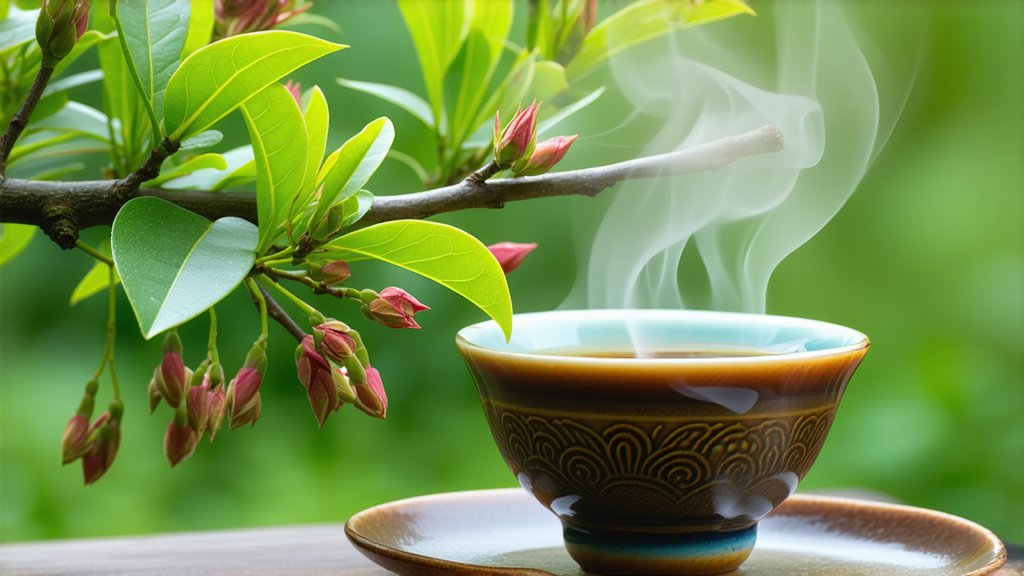
In the vast tapestry of Chinese tea culture, where every thread tells a story of history, tradition, and meticulous craftsmanship, Junshan Yinzhen stands out as a golden thread, weaving together centuries of heritage with the subtle elegance of its flavor profile. This exquisite yellow tea, originating from Junshan County in Hunan Province, is not just a beverage but an experience that encapsulates the essence of Chinese tea artistry.
A Glimpse into History
The tale of Junshan Yinzhen begins in the mist-shrouded mountains of Junshan, where legend has it that tea was first cultivated over a thousand years ago. Named after the region's misty peaks (Yinzhen), this tea has been revered since ancient times for its unique character and health benefits. It gained prominence during the Tang Dynasty (618-907 AD) and continued to flourish through subsequent dynasties, becoming a symbol of purity and refinement.
Varieties and Classification
Junshan Yinzhen belongs to the broader category of Huang Cha (yellow tea), which is one of the six major types of Chinese tea alongside green, black, white, oolong, and pu-erh. Among these, yellow tea is the rarest and least known outside China, making Junshan Yinzhen a hidden gem waiting to be discovered by tea enthusiasts worldwide. Its classification under the 'yellow' category refers to the unique processing method that imparts a distinct yellow hue to both the leaves and the brewed tea.
The Art of Processing
The magic of Junshan Yinzhen lies in its intricate processing technique, which involves several stages designed to enhance its natural flavors while preserving its delicate structure. The journey begins with the careful handpicking of young, tender leaves and buds during the early spring season, ensuring only the finest quality raw materials make it into the final product.
Next comes the crucial step of fixation, where the freshly picked leaves are briefly heated to halt oxidation, setting the stage for the development of yellow tea's characteristic color and taste. Unlike other teas, Junshan Yinzhen undergoes a gentle rolling process that helps release its aroma without breaking the leaves, followed by a controlled fermentation period under humid conditions. This fermentation process is shorter than that of black tea but longer than green tea, resulting in a unique balance between freshness and maturity.
The final touch involves a slow drying phase, often done over low heat or in the sun, which further mellows the flavors and fixes the tea's signature yellow appearance. Each step is meticulously timed and executed to perfection, reflecting the mastery of artisans who have passed down their skills through generations.
The Symphony of Flavors: A Guide to Tasting
To truly appreciate Junshan Yinzhen, one must embark on a sensory journey that engages sight, smell, taste, and even sound. Begin by observing the dry leaves, which resemble delicate needles coated in a fine down, shimmering with a pale gold hue. As hot water is poured onto them, watch the leaves gracefully unfurl, revealing their vibrant green core amidst the golden broth.
Inhale deeply to capture the subtle yet complex aroma—a harmonious blend of floral notes, orchids and osmanthus, intertwined with hints of earthiness and sweetness reminiscent of honey. The first sip introduces a velvety texture that glides smoothly across the palate, unveiling layers of flavor: a mild sweetness balanced by a whisper of umami, followed by a refreshing aftertaste that lingers like a gentle breeze through a mountain meadow.
For an authentic tasting experience, use a transparent glass cup to admire the dance of the leaves and appreciate the clarity of the brew. Optimal brewing involves using water at around 80-85°C (176-185°F) and allowing the tea to steep for about 2-3 minutes. Adjust steeping time based on personal preference; shorter for a lighter taste and longer for a fuller body.
Cultural Significance and Modern Appeal
Beyond its culinary delights, Junshan Yinzhen holds cultural significance in Chinese society, often associated with hospitality, wellness, and spiritual enlightenment. It is commonly served during important gatherings, ceremonies, symbolizing respect and friendship. In traditional medicine, it is believed to aid digestion, boost immunity, and promote overall wellbeing due to its rich content of antioxidants and amino acids.
In contemporary times, Junshan Yinzhen has found favor among discerning tea connoisseurs globally, who seek unique tea experiences beyond the familiar green and black varieties. Its limited production and labor-intensive cultivation contribute to its exclusivity, adding allure for collectors and enthusiasts alike. Moreover, its gentle nature makes it an excellent choice for those new to tea exploration, offering a gateway into the diverse world of Chinese tea without overwhelming the senses.
In conclusion, Junshan Yinzhen embodies the philosophy of harmony and balance inherent in Chinese culture. From its storied past to its meticulous present-day production, each aspect of this remarkable tea speaks volumes about the dedication to quality and tradition that defines Chinese tea culture. For anyone seeking a moment of tranquility amidst the chaos of modern life, a cup of Junshan Yinzhen serves as a reminder of nature's simple pleasures and humanity's enduring connection to the land.
As you savor each sip, let the story of Junshan Yinzhen unfold in your mind, transporting you to the misty mountains of Hunan, where every leaf carries with it centuries of wisdom, patience, and love for the art of tea.